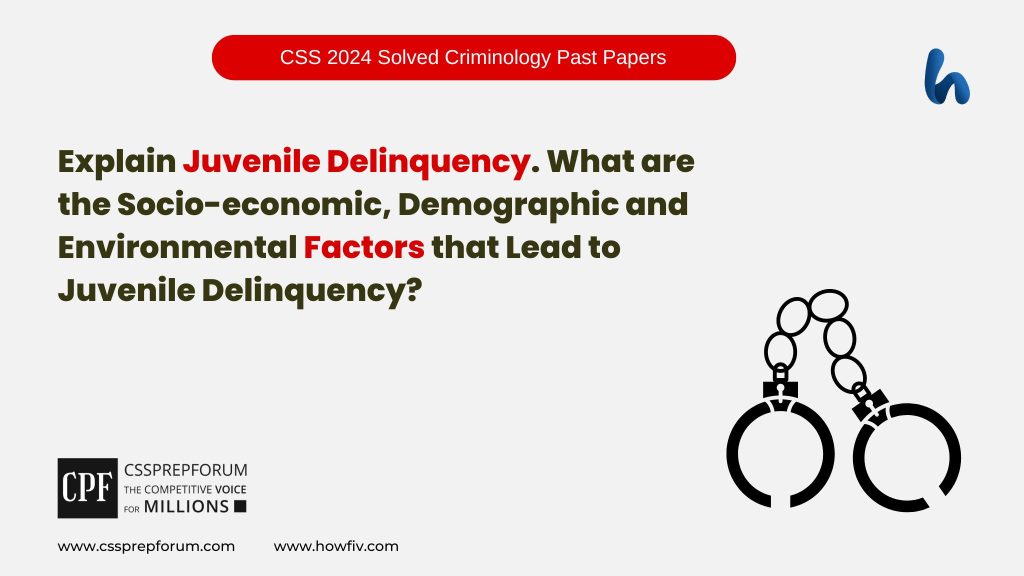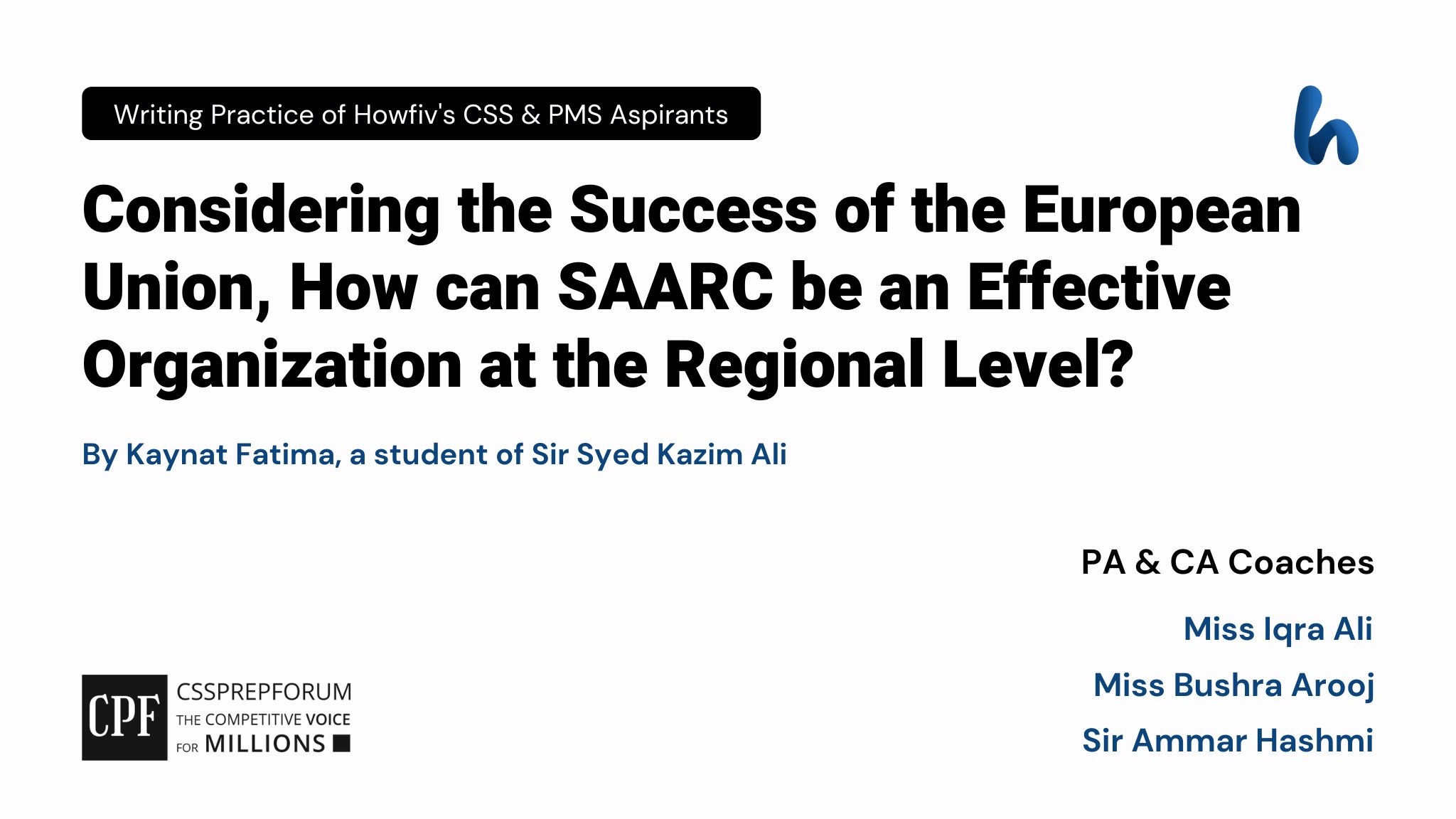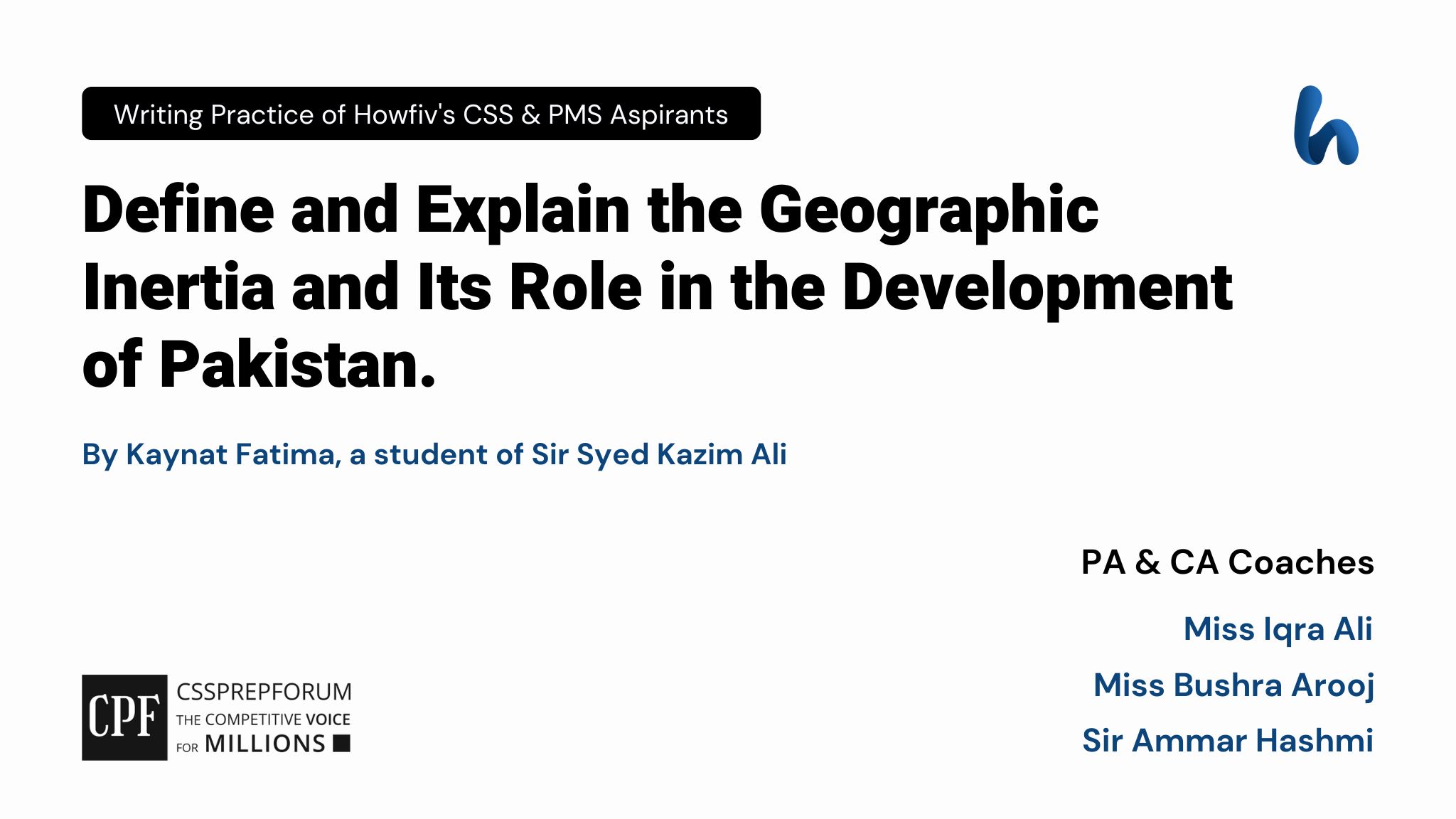CSS Solved Criminology Past Paper 2024 | Juvenile Delinquency and its Factors

Question Breakdown
In this question, the examiner has asked the aspirants to explain juvenile delinquency and various factors that lead to it. To secure good marks in this question, one ought to explain the term ‘juvenile delinquency’ by giving its literal meaning. Moreover, to enhance the quality of one’s answer, definitions of juvenile delinquency given by different scholars and institutions can be added. The second significant part of the question is about the socio-economic, demographic, and environmental causes of juvenile delinquency. This part of the question can be explained through various examples and theories. Nonetheless, despite mentioning the causes, one can also suggest certain measures that can be taken by the state as well as society to minimize juvenile crimes.
Outline
1-Introduction
2-Meaning of Juvenile Delinquency
3-Defining Juvenile Delinquency
4-Examples of Juvenile Delinquency in Pakistan
5-Various Factors Leading to Juvenile Delinquency in Pakistan
- ✓Social Causes
- ✓Economic Causes
- ✓Demographic Causes
- ✓Environmental Causes
6-Measures that can be taken by the State and Society to Minimize Juvenile Delinquency
- ✓Role of Family and Society in Minimizing Juvenile Crimes
- ✓Improving the Juvenile Justice System of Pakistan
- ✓Providing Proper Education and Opportunities to Juveniles of Unprivileged Strata of Society
7-Critical Analysis
8-Conclusion

Answer to the Question
Introduction
According to the Sage Dictionary of Criminology, juvenile delinquency refers to the antisocial conduct of a juvenile which goes beyond parental control and is subject to legal action. The history of juvenile delinquency is as old as adult crimes. Since 1995, the world has experienced a 30 to 60 per cent increase in juvenile crimes. Various social, economic, psychological, demographic, and environmental factors lead to juvenile delinquency. People under the age of eighteen might indulge in criminal activities because of rejection by parents or peer groups, stigmatization, lack of affection, economic instability, etc. To minimize juvenile delinquency, education and proper attention to children are paramount.
In Pakistan, various laws for the protection of juveniles have been passed. However, there is a lack of practical implementation.
Meaning of Juvenile Delinquency
The term juvenile delinquency is derived from two Latin words: juvenis and delinquere. It refers to a situation where children turn into criminals.
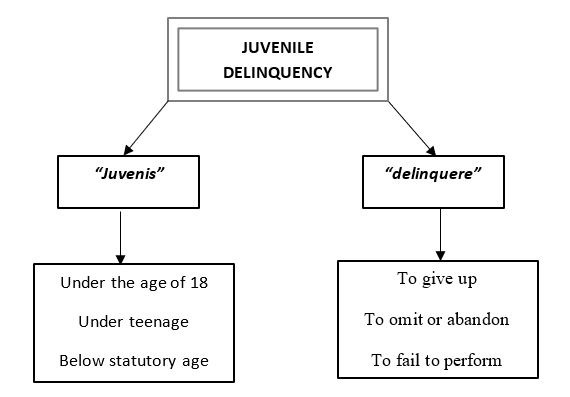
William Corcon first used the term juvenile delinquency in 1484. Shakespeare also used it in 1605 in Macbeth. Furthermore, in 1969, Travis Hirschi explained the “Causes of Juvenile Delinquency,” and in 1948, Johan Cohrie wrote about “Juvenile Delinquency among Girls.”
Defining Juvenile Delinquency
According to Sutherland, juvenile delinquency can be defined as
“Illegal behaviour of youth in violation of penal code, criminal law, social norms, and all laws applicable to young offenders”
Section 2 of the Juvenile Justice System Act 2018 defines juvenile and juvenile offenders as
“Juvenile means child who must be dealt with for an offence in a manner, which is quite different from adult accused or adult criminal.”
“A person who is alleged to have committed a crime under the juvenile justice system is considered a juvenile offender.”
According to the Articles 82 and 83 of the Pakistan Penal Code 1860,
“Nothing is an offence, which is done by a child of under ten years and that of under fourteen years with immature understanding.”
Examples of Juvenile Delinquency in Pakistan
The acts that are counted as juvenile delinquency in Pakistan include one-wheeling, disobedience of parents or teacher’s authority, skipping classes, running away from homes, use of drugs and narcotics, larceny, pickpocketing, shoplifting, and wandering aimlessly at night without any business. Moreover, reckless driving without a license, homosexual behaviour, participating in gang fighting and begging, etc. are also considered juvenile offences.
Various Factors Leading to Juvenile Delinquency in Pakistan
Juvenile crimes are as old as adult crimes and started with the birth of man. However, the world has envisioned an increase in juvenile crimes in the past decade. For instance, 49% of the total population of Pakistan is juvenile, and the country ranks in sixth position in terms of child marriage and juvenile delinquency. In Pakistan, 10% of convicts of murder are juveniles.
According to the Society for Protection of Juveniles, more than 2000 juveniles are imprisoned in Pakistan, among which twenty per cent are girls, and ninety per cent of them are waiting for their trials. The rate of juvenile delinquency in Pakistan is relatively higher due to biological, psychological, and social phenomena, global epidemics, and numerous other causes. Currently, Pakistan only has two Borstal institutions despite the Borstal Act 1926, Sindh and Borstal Act Punjab, 1955.
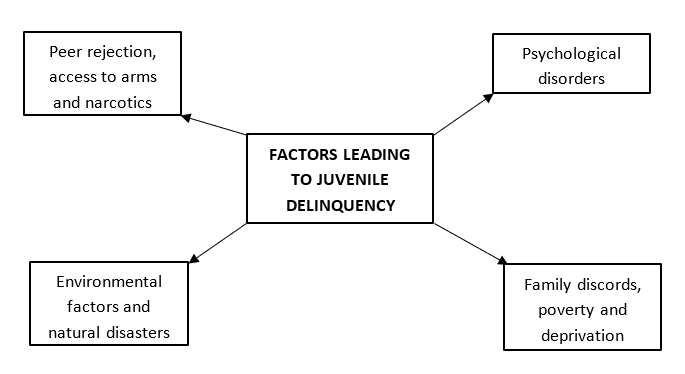
Social Causes
According to the Social Bonds Theory, if one’s social bonds – like attachment with parents, commitment to future goals, involvement in social and religious activities, belief in fairness, etc. – are strong, the chances of indulging in criminal behaviour are minimized. According to Travis Hirschi,
“Everyone has got the potential to commit crime. We are all animals and have the capacity to commit crime as a part of our nature.”
Travis Hirschi conducted research on 4000 boys and found that those with unstable family backgrounds had been involved in criminal behaviour. Lack of attention, affection and love, family discords, separation of parents, peer rejection, and substance abuse, as well as bad company, are the primary social causes of juvenile delinquency.
Economic Causes
Despite social causes, various economic causes, such as poverty, unemployment, and inequality, result in juvenile delinquency. According to John Burton’s Human Needs Theory, certain human essentials like identity, economic stability, political participation, etc., are essential. If one is deprived of these fundamental needs, it might lead to frustration, aggression, and, thus, violence or criminal behaviour.
Demographic Causes
As a result of structural disparities and discrimination, juveniles indulge in crime because they are deprived of education and other opportunities. According to the Relative Deprivation Theory by Robert Tedd Gurr, when one individual or group of individuals feel relatively deprived and underprivileged, they might indulge in deviant behaviour or conflict in order to achieve their rights. For instance, the young population of Pakistan is easily radicalized by militant groups because they are fascinated by the social status and wealth that comes with being a part of such groups and being involved in terrorist activities.
Environmental Causes
According to Gabriel Tarde’s “Law of Imitation”
“Every child’s mind is a blank sheet of paper. Whatever he learns, it is printed on his mind.”
The environment influences human behaviour for various biological or psychological reasons. According to the Learning Theory by Sutherland, crime is a learned behaviour, just like norms, habits, and values are internalized. Through interaction and being surrounded by bad company or environment, one adopts criminal behaviour. For instance, when a father practices domestic violence in front of his son, it is likely that the son will adopt similar behaviour with his wife in future. Despite this, natural disasters and pandemics also lead to an increase in crime rate because of financial problems, destruction of infrastructure, loss of jobs, etc.
Measures that can be taken by the State and Society to Minimize Juvenile Delinquency
“Save the youth of today from becoming criminals of tomorrow.”
From the mid-18th century to the 19th century, various child-saving movements were initiated for the betterment of the interests of the children. According to Parents Patriae, Loco parentise and Doli incapax, the child has no capacity for committing a crime; therefore, the state should act as a loving father of the child and work in the best interest of the child. In 1899, the first juvenile justice system was created in the United States, and in 2018, Pakistan introduced the Juvenile Justice System Act. Articles 35, 10, 10A, and 14 (1) of the 1973 Constitution of Pakistan state that laws must be made to protect juveniles.
Role of Family and Society in Minimizing Juvenile Crimes
It is crucial for the family and society not to label the child if they envision any deviant behaviour because stigmatization will instil that behaviour. According to the Labelling Theory by Howard Becker, society labels a child because of an offence, thus affecting their self-esteem. As a result, the child adopts criminal behaviour perpetually.
Improving the Juvenile Justice System
“A system in which a juvenile is kept for protection, rehabilitation, and reformation is called the juvenile justice system.”
The treatment of juvenile offenders is different from that of adult criminals. They are not kept in police stations or prisons, tortured, or given life imprisonment, handcuffs or capital punishment. Though, in countries like Pakistan, these rules exist in theory but not effectively implemented. Therefore, these rules mentioned in the Juvenile Justice System Act 2018 ought to be practised by establishing proper observation homes and special courts.
Providing Proper Education and Opportunities to Juveniles of Unprivileged Strata of Society
According to Article 25 (A) of the 1973 Constitution of Pakistan, education is the right of all citizens. Moreover, Prophet Muhammad (PBUH) said,
“Seeking education is mandatory for both (men and women).”
Therefore, education should be prioritized within the state as it will mitigate various issues in the country, including juvenile delinquency. Furthermore, opportunities should be provided to the youth of unprivileged strata of society so that their fundamental needs are fulfilled, thus preventing them from getting involved in extremist activities.
Critical Analysis
Juvenile delinquency refers to the violation of criminal law by children under the age of 18. Though the existence of crime is as significant and old as the existence of man, certain socio-economic, demographic and environmental factors aggravate the situation. Psychological causes such as mental illness, schizophrenia, and aggressive and psychotic behaviour also result in juvenile delinquency. In recent years, juvenile crimes have increased due to a number of causes questioning the societal health of various states. Nonetheless, according to the Structural Functionalist Perspective of Sociology, crimes also have a function in society as they accentuate the weaknesses of a particular society and lead it towards the path of improvement.
Conclusion
In a nutshell, juvenile delinquency can be defined as the youth indulging in illegal or criminal behaviour such as disobedience of parents or teachers, elopement, use of drugs and narcotics, larceny, pickpocketing, homosexual behaviour and damaging to others’ property, etc. These types of behaviours are instilled in juveniles due to problems in their family and social life. The behaviour becomes perpetual due to various contributory factors like economic deprivation and structural disparities. In order to minimize juvenile delinquency, giving due attention to children, improving the juvenile justice system, and providing them with education and employment opportunities is paramount.


